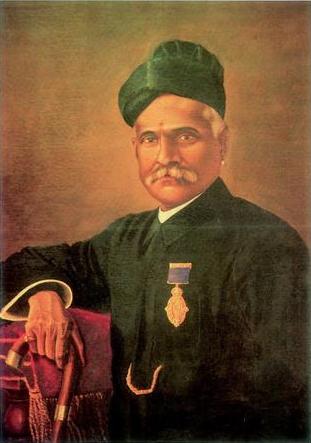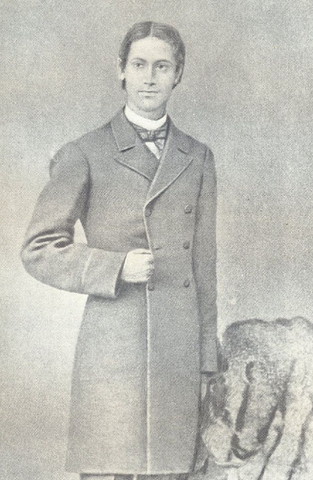The Top 5 Famous Indian Artists (Masterpiece Painters)
The history of Indian art is lengthy, illustrious, and intricate, and it spans thousands of years.
On the other hand, the names of the ancient Indian artists who were responsible for the sculptural architecture of exquisite works, such as the caverns of Ajanta and Ellora are lost to history. Here are a few of the most well-known Indian artists.
Famous Female Artists And Their Masterpiece Paintings
1. Raja Ravi Varma

Raja Ravi Varma was one of the first prominent Indian painters. He was known for combining Western creative skills with a distinctly Indian sensibility in his work.
The academic system that the British ruled over contributed to the introduction of European elements into Indian art.
It was Abanindranath Tagore, who served as the head of the Bengal School of Art, who was responsible for shifting the focus of the Indian painting landscape away from western inspirations and toward more traditional Indian art traditions.
The Progressive Artists' Group based in India was established in 1947, then combined aesthetics that were common in the west with art historical influences that originated in India.
It included artists such as SH Raza, MF Husain, and Tyeb Mehta, all of whom went on to acquire widespread recognition later in their careers. In the end, several of the painters of PAG looked to Indian culture for inspiration to breathe fresh life into their works of art.
Famous Spanish Artists And Their Iconic Paintings
2. Tyeb Mehta
Tyeb Mehta was a member of the Progressive Artists' Group (PAG) in Mumbai. In addition to painting and sculpting, he also made films. Mehta also developed relationships with several artists who would go on to have successful careers, including S. H. Raza and M. F. Husain.
Mehta eventually broke away from the patriotic Bengal school and adopted a style that was greatly influenced by Western modernism. In 1959, Mehta relocated to London, where he remained until 1964.
After that, he traveled to New York City. While Mehta was living in London, he was motivated by the macabre distortions created by the well-known British artist Francis Bacon.
When Mehta moved to New York, his work began to take on a more minimalistic aesthetic. Later on, in the 1970s and 1980s, he began focusing on Indian ideas and issues in his work.
In 2007, Mehta was presented with the Padma Bhushan, which is the third highest overall civilian accolade that can be bestowed in India.
3. Satish Gujral
In 1939, Satish Gujral enrolled in the Mayo School of Art in Lahore. The following year, in 1944, he attended the Sir J.J. School of Art in Mumbai.
Gujral was born in Jhelum, which was located in West Punjab before the partition. On the other hand, in 1947 he was forced to give up his education because of an ongoing sickness.
In 1952, Gujral was awarded a scholarship to attend the Palacio de Bellas Artes in Mexico City to further his artistic education. It was in this city that he began his artistic training under the tutelage of Mexican painters Diego Rivera and David Alfaro Siqueiros.
After India gained its independence, Satish Gujral established himself as one of the most prominent painters in the country.
Famous Mexican Artists And Their Iconic Paintings
Between the years 1952 and 1974, he curated exhibitions of his work in several places all over the globe, including New York City, New Delhi, Montreal, Berlin, and Tokyo, amongst others.
As an artist, Gujral is well-known for his versatility; he has produced works in the fields of painting, graphics, murals, sculpture, architecture, and interior design, among other areas.
The suffering that the people of India went through as a result of the partition of the country is one of the key subjects that he has addressed in his artwork. The Padma Vibhushan was bestowed to Satish Gujral in the year 1999.
4. Rabindranath Tagore

Rabindranath Tagore was not just a poet but also an artist. He was the laureate of the Nobel Prize in Literature, thus most people know him for his poetry.
When he was in his seventies, he finally picked up a paintbrush and started painting. Even though he started by drawing doodles, he eventually went on to develop a wide range of pictures, such as fantastical and unusual monsters, masks, fascinating human faces, enigmatic landscapes, birds, and flowers.
Tagore went on to create hundreds of works of art, and in 1930, he was the first Indian artist to display his works throughout Europe, Russia, and the United States of America. His exhibitions were a huge success.
Tagore was an artist whose work is known for its strong sense of individualism as well as its use of daring shapes, vibrancy, rhythmic quality, and a feeling of fantasy.
Tagore most likely suffered from a kind of color blindness known as a red-green deficiency, which explains why his paintings include unusual color schemes and unconventional aesthetics.
Famous Renaissance Artists and Their Work
Rabindranath Tagore was a significant figure in the art world, and his legacy lives on in the work of many contemporary Indian painters.
There are 102 pieces attributed to him that may be found in the collections of the National Gallery of Modern Art in India.
5. Sayed Haider Raza
Expressionistic landscape painting was where S. H. Raza got his start as an artist. In October of 1950, he relocated to France and started his artistic investigation into Western modernism.
During the 1970s, Raza's level of dissatisfaction with his employment continued to rise. He was able to get a deeper understanding of Indian culture as a direct consequence of his travels around the country, particularly to the Ajanta and Ellora caves. This, in turn, breathed fresh life into his artistic practice.
Famous Baroque Artist (Great Painters)
In the year 1980, the "Bindu" (also known as the dot) emerged as a central element in his work and earned him widespread praise.
Raza began to investigate other Hindu elements in his artwork, such as the Prakriti-Purusha triangle and the Tribhuj. His evolution as an artist, from an expressionist landscape painter to an abstract art master, was finally finished with this achievement.
In the 2000s, Raza produced pieces revolving around the Kundalini, Nagas, and the Mahabharat, demonstrating an increased interest in Indian spirituality.
At a Christie's auction in 2010, the piece titled Saurashtra by Raza sold for more than $3.48 million, being one of the most valuable Indian paintings ever sold at a public auction.
In 2013, Sayed Haider Raza was recognized with India's Padma Vibhushan award. In addition, the French government bestowed upon him the Legion of Decoration in 2015, which is the nation's highest civilian honor.




